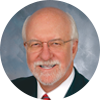The advent of electronic communications has its benefits as well as its detractions. At any given time, my cell phone is ringing while my computer is alerting me to new e-mail while my PDA is buzzing and the fax machine is whirring - usually in the middle of a face-to-face meeting.
Operating in this fast-paced, electronic world has enabled us to standardize chiropractic, and health care in general, in ways previously unheard of. Probably the most salient example of the electronic age is the move to electronic medical records. In my time working with the Phoenix Veterans Administration Medical Center, I have witnessed the future. This facility is completely paperless, and the efficiencies created through this electronic system are astounding. My work with the VA gave me the vision of what should be used in private offices, and chiropractic is fortunate to have seen advancements in software development that finally gel with the available hardware.
Our practice in Phoenix also is paperless, which took several years and a multitude of programs to accomplish. Now, however, our record-keeping system is accurate and accessible, which enhances patient satisfaction and generates cost efficiencies for our organization.
This standardization of record-keeping has enabled us to improve outcome measurements as well. We can now easily track the productivity and efficacy of our techniques and share our learning and experiences with our colleagues. I remember 20 years ago when no one wanted to bother with outcome measurements because record keeping seemed too cumbersome to promote the collection of solid data. However, with electronic record keeping, we can now secure and analyze data with ease, which helps us improve our practices and the patient experience.
Continuing education has also benefited from the availability of the Internet, DVDs and other electronic communication methods. Information that is disseminated to the masses is consistent, and research findings and technique developments can easily be shared globally. No longer do we have multiple versions of the same information taught in different areas. Through distance learning programs, we can standardize curriculum and ensure that each student and doctor receives a similar educational experience.
While I am thrilled to see chiropractic elevated by leveraging the resources in the electronic age, nothing will ever replace the networking and camaraderie that hail from doctors getting together to share ideas. I remember those early hallway conversations with instructors when I was a student just as well as the research paper I read online yesterday. The human element is so critical. We never want to lose sight of the importance of face-to-face communication - we simply need to strike a balance between the human experience and the electronic one. So, the next time you are frustrated by the ringing of the phone, the buzzing of the Blackberry and the computer voice indicating, "You've got mail!" please remember that as chiropractors, we are definitely better for these advancements.
Click here for previous articles by Arlan Fuhr, DC.





